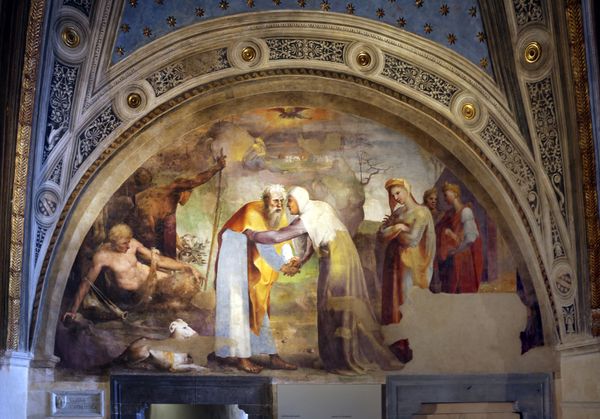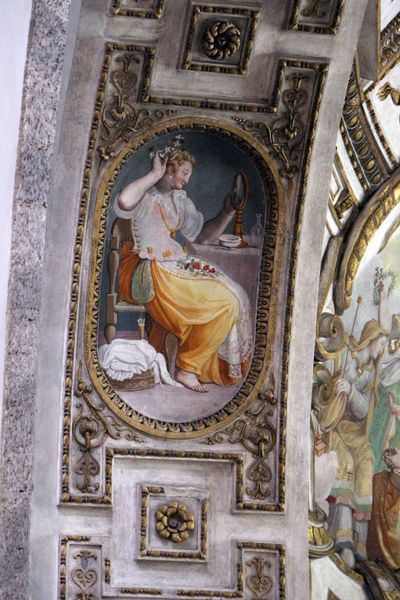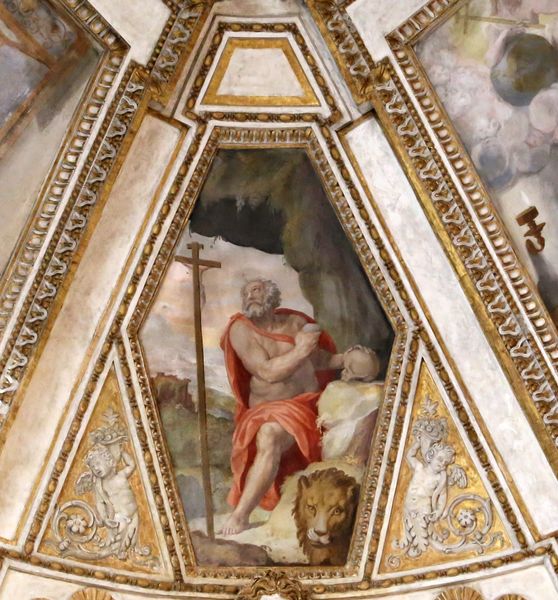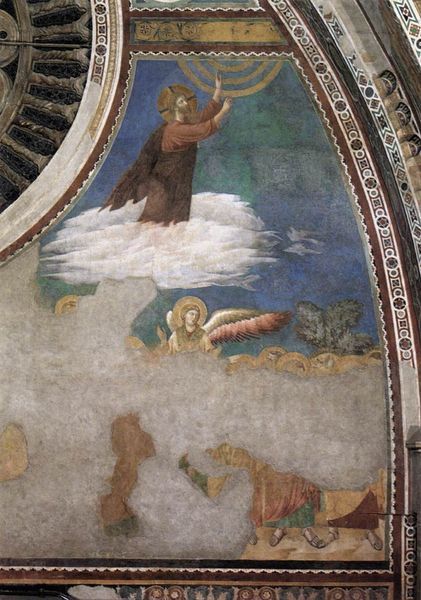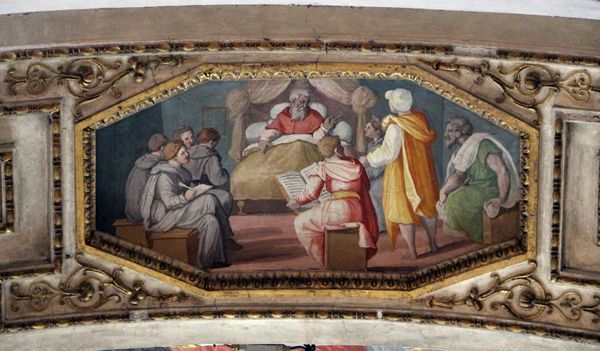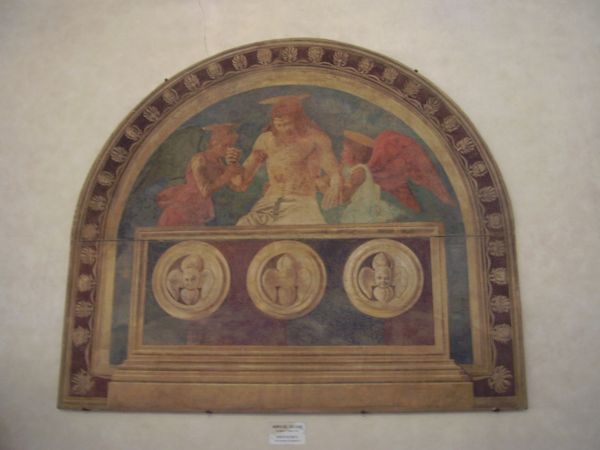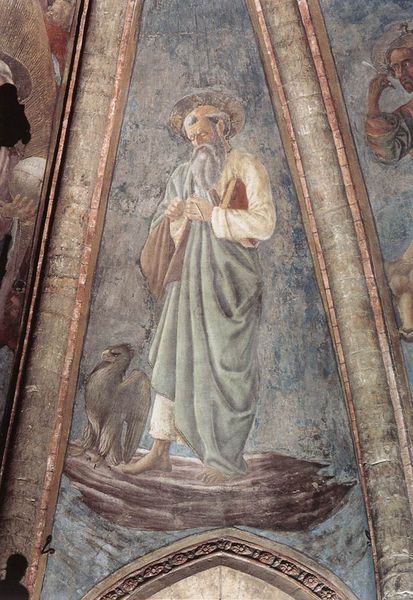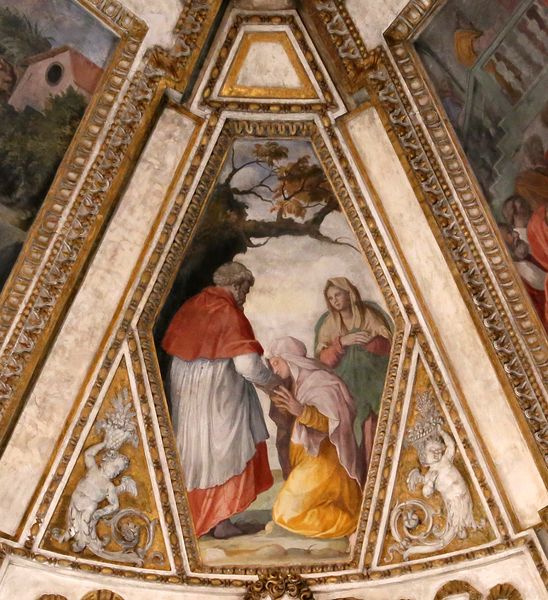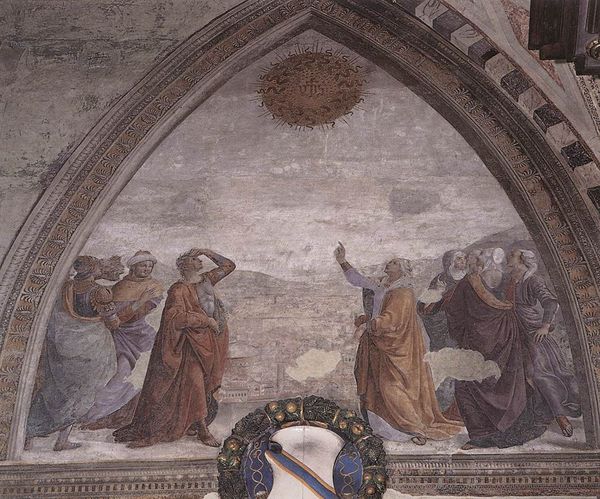
fresco
#
allegory
#
figuration
#
fresco
#
oil painting
#
history-painting
#
italian-renaissance
Copyright: Public domain
Curator: Okay, let's look at this detail from Antoniazzo Romano's "Annunciation" fresco, painted around 1510, a true gem from the Italian Renaissance. What strikes you immediately? Editor: It's ethereally peaceful. The figures seem to float against this subtly stained ground of reds, creams, and sagey greens. A visual hush, perfect for an announcement of the miraculous kind, no? Curator: Exactly! Romano really captured that sense of divine moment, the ultimate breaking news. Note how he frames God the Father, resting in a cloud. The classical figure gestures benediction as the Holy Spirit, in the form of a dove, shoots rays of light down, presumably to Mary in the full fresco. It's an allegory but, dare I say, an unexpectedly emotional one. Editor: Emotionally charged yet remarkably understated! I think this approach creates visual harmony. But to me it raises questions too. Structurally, the composition uses an arc formation for dramatic weight, pushing the action downward toward a hidden character. It feels weighted, ready for action. There’s the color too; I'm captivated by Romano’s tonal control to render what essentially functions as holy weather—softened colors against earth tones. I could sit here looking for hours. Curator: Me too, this blend of grounded earthly hues with hints of gold creates a mesmerizing effect. The scene is deeply symbolic, each element—the cloud, the dove, even the colors—holds layers of meaning related to the Holy Trinity, so to speak. Did it land with its intended audience, though? Is this style the ultimate aim? It lacks the expressive gestures seen elsewhere. Editor: Precisely— it creates room for individual reflection, moving this fresco from being an historical document into more of a meditation for viewers. It presents a divine message delivered, perhaps ironically, on decidedly earthly and imperfect fresco grounds. That touch feels incredibly relatable. Curator: Agreed! The very medium itself underscores its presence in its day. The Renaissance wasn't just about grand pronouncements. Editor: Right, instead, Romano’s "Annunciation" feels almost deliberately vulnerable. A masterclass of thoughtful delivery, right?
Comments
No comments
Be the first to comment and join the conversation on the ultimate creative platform.

